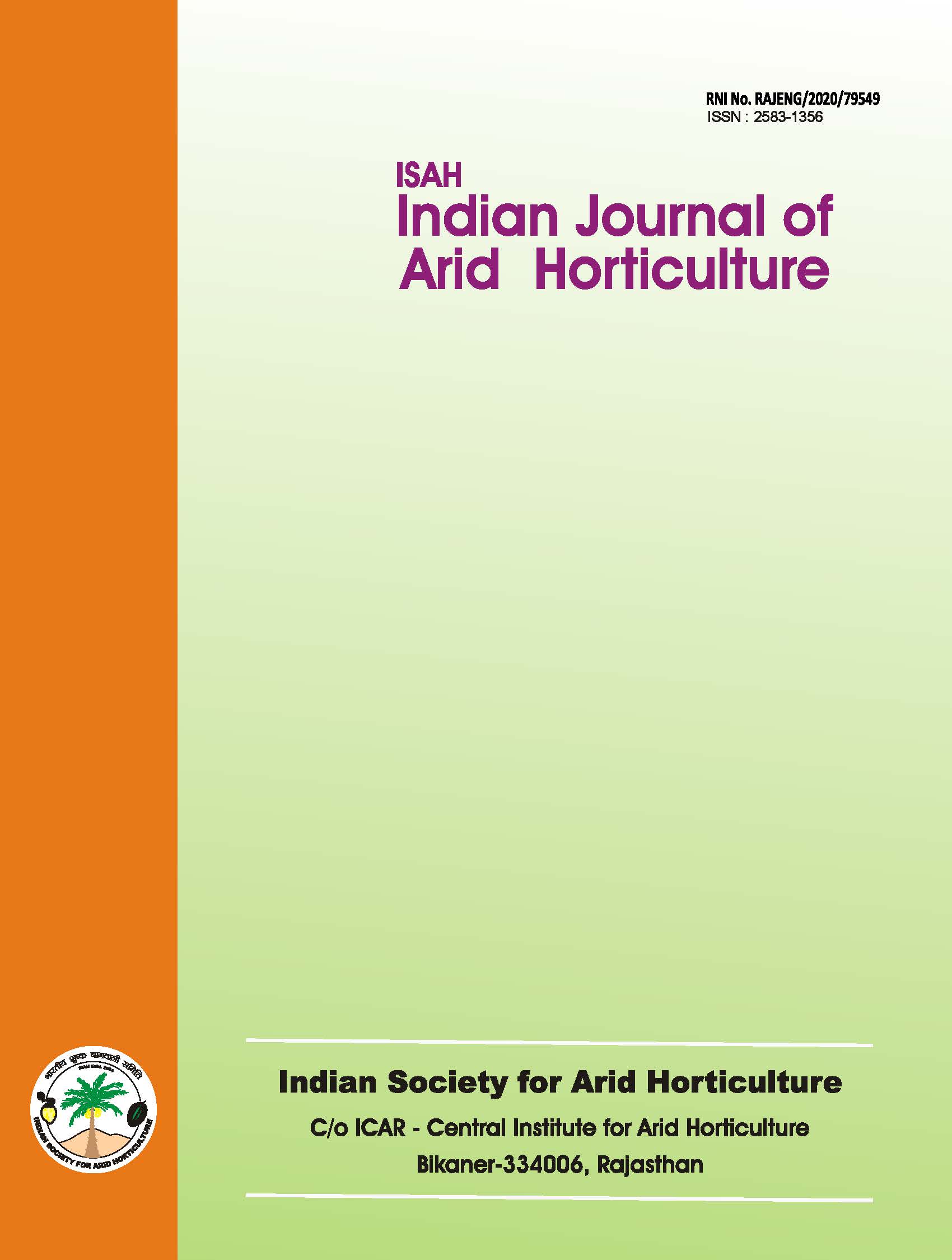Use pattern of agro-chemicals in ber based cropping system: ber grower's perceptions
Keywords:
Bikaner, ber, inter crop, insecticide, fungicide, fertilizerAbstract
The present study was conducted in Bikaner district of western Rajasthan. A total of 108 ber growers were selected for the study using purposive-cum-random sampling method. It was found that during kharif season, 8-36% ber growers grow various vegetables as intercrops in ber orchards on area ranging from 0.1-1.2 ha. During rabi season, 9-32% ber growers grow several Rabi vegetables/wheat/mustard/gram/green fodders/cumin/fenugreek (seeds) as intercrop in ber orchards on area ranging from 0.1-1.1 ha. Some of the ber growers grow some vegetables as intercrops in ber orchards during the summer season also. It was also observed that 37-86%, 48-89% and 17-29% ber growers use various fungicides, insecticides and nematicides, respectively to control the insect pests and diseases in ber and vegetable intercrops grown in ber orchards. The chemical fertilizers (Urea, DAP, SSP) is used by 32-98% ber growers in ber based cropping system. However, the ber growers are unhappy with use of agro-chemical (Fungicides, insecticides, fertilizers, etc.) in their crop production. They perceive that the use of agro-chemicals in crop production leads to "poisoning and degradation of the soil quality/properties, degradation in quality and tests of the crop produces, crop produces become unhealthy and poisonous, induce the diseases and disorders in human being and animals body, reduce biodiversity, contaminate the ecological food chain, pollute the irrigation water, decrease the soil fertility, dangerous to crops and other economic plants, induce paralytic effect on human and animals limbs, increase soil drought and pollute the air, water bodies and ground water.Downloads
References
Nair, G.K. 1996. Pesticide is harmful but farmers prefer it. The Times of India Daily, New Delhi, 1st March, p.3.
Piementel, D., Acquay, D., Bittonen, H., Rice, M., Silva, P., Nelson, M.J., Hipner, V., Horowitz, A.S., and Amore. 1992. Assessment of environmental and economic costs of pesticide use. In: Piementel, D. and Lehman, H. (Eds.), The Pesticide Questions: Environmental Economics and Ethics. Chapman and Hall, New York.
Potter, C. 1965. Research on insecticides and their safety in use. Scientific Progress, 53: 393-411.
Roa, B.N. 1994. Pesticide residues and effects. Pesticide Contamination Bulletin (AICRIP) on Pesticide Residues. College of Agriculture, APAU, Hyderabad, India, pp. 56-57.
Shaik, N.M. and Bhal, R. 2000. An analysis of utilization pattern of pesticides on vegetable crops in Delhi state. Indian Journal of Extension Education, 36(3&4): 116-123.
Sharma, D.D. and Khurana, G.S. 2000. Harvesting and marketing pattern of mango crop: An adoption study of Punjab orchards. Agricultural Extension Review, 12(6): 22-25.

